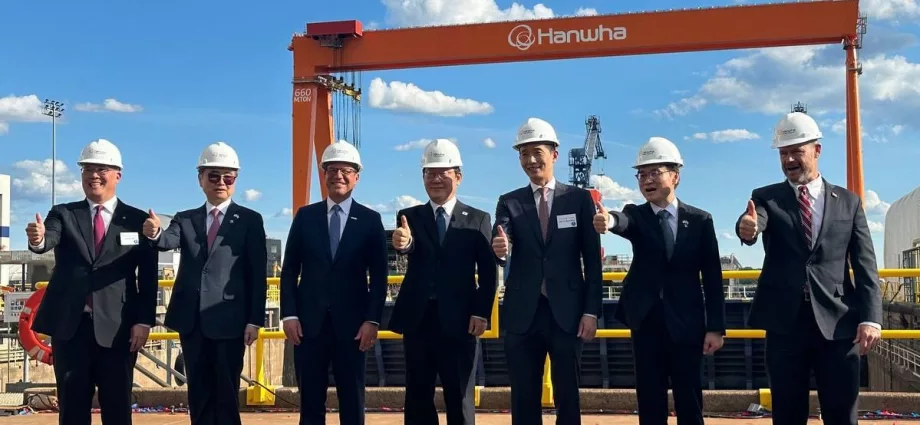South Korean President Lee Jae Myung visited the Hanwha Philly Shipyard in Philadelphia, Pennsylvania, today, marking a significant step in strengthening U.S.-South Korea economic and security ties. The visit, following a summit with U.S. President Donald Trump in Washington, D.C. yesterday underscored a shared commitment to revitalizing American shipbuilding under the “Make American Shipbuilding Great Again” (MASGA) initiative.
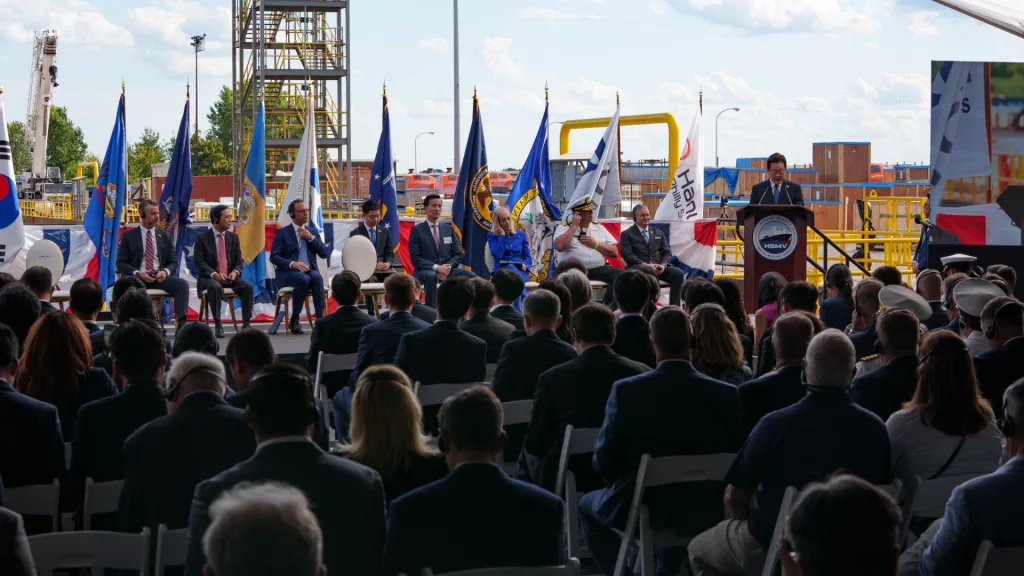
The Hanwha Philly Shipyard, acquired by South Korea’s Hanwha Ocean and Hanwha Systems for $100 million in December 2024, was the focal point of the visit. President Lee, joined by U.S. officials including Transportation Secretary Sean P. Duffy, Labor Secretary Lori Chavez-DeRemer, and Sang H. Yi, acting head of the U.S. Maritime Administration, participated in a ceremonial christening of the State of Maine, a multiuse training vessel built for a New England merchant marine academy. The vessel, based on advanced Korean designs, highlights the shipyard’s role in producing ships for both commercial and government use, including those compliant with the Jones Act, which mandates U.S.-built vessels for domestic maritime trade.
A New Chapter for the Alliance and the “MASGA” Vision
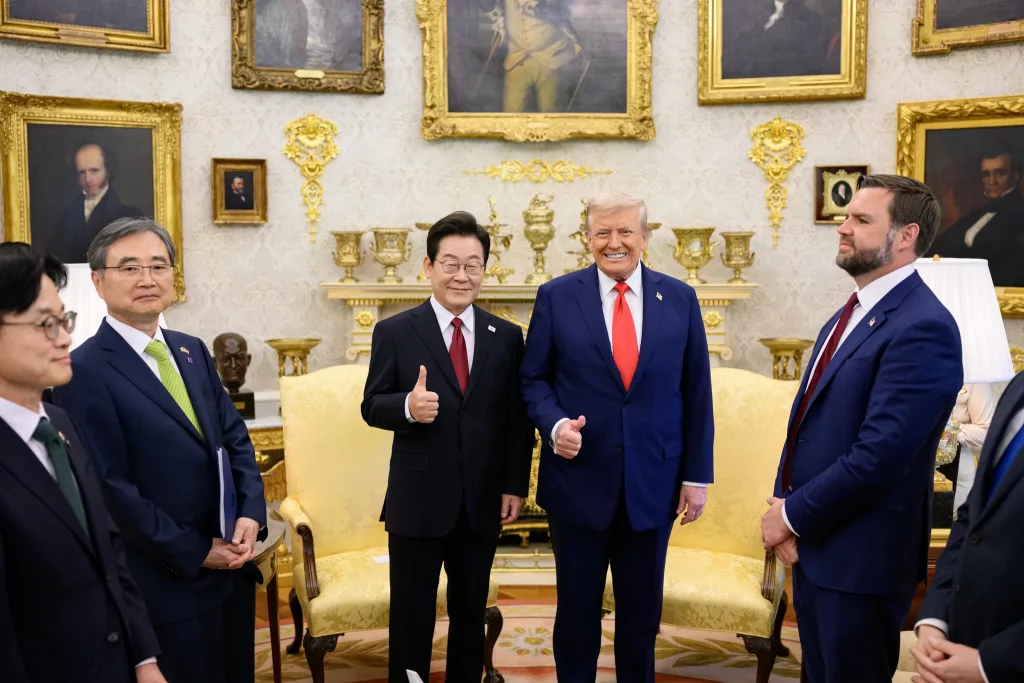
President Lee’s visit followed his summit with President Trump the previous day, underscoring implementation of Korea-U.S. trade and security agreements. As part of Korea’s $350 billion investment pledge in U.S. projects, $150 billion will go into shipbuilding to modernize U.S. yards and bolster maritime security. Labeling the initiative “Make American Shipbuilding Great Again (MASGA),” Lee framed it as a response to China’s dominance accounting for about 71% of new global ship orders last year and a vision for revitalizing U.S. shipbuilding.
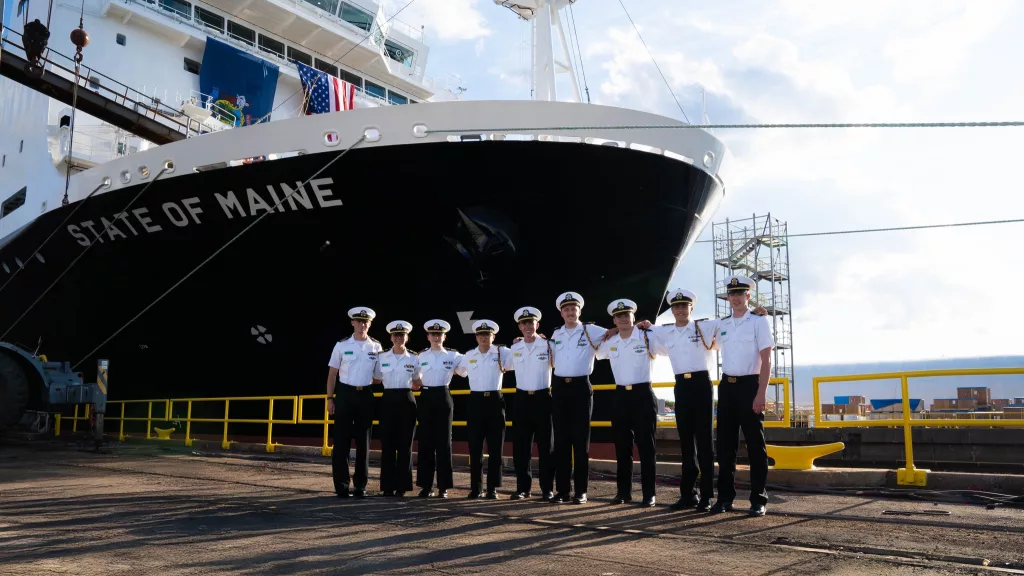
In his speech, Lee declared,“Through this Philly Shipyard, the 72-year history of the Korea-U.S. alliance will enter a new chapter as a future-oriented comprehensive strategic alliance, combining security, economy, and technology.”
He added, “MASGA is not just about building massive warships and advanced vessels. It is about restoring lost dreams. Just as Koreans built the miracle of ‘K-Shipbuilding’ from barren fields 50 years ago, Korea and the U.S. can achieve the miracle of MASGA together.”
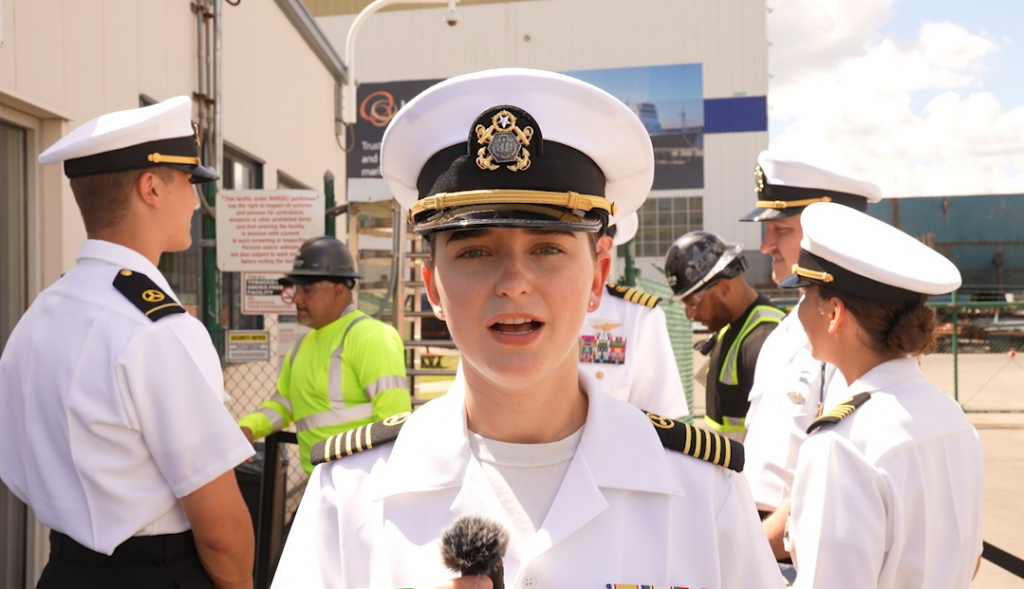
He recalled that ships built at the Philadelphia Naval Shipyard helped save Korea during the Korean War. “The Korean people, rescued by those ships, rose from the ruins of war to forge their future. Now, Korean shipbuilding will strengthen U.S. maritime security and contribute to the rebirth of American shipbuilding.”
Hanwha’s $5 Billion Investment and Expansion Plans
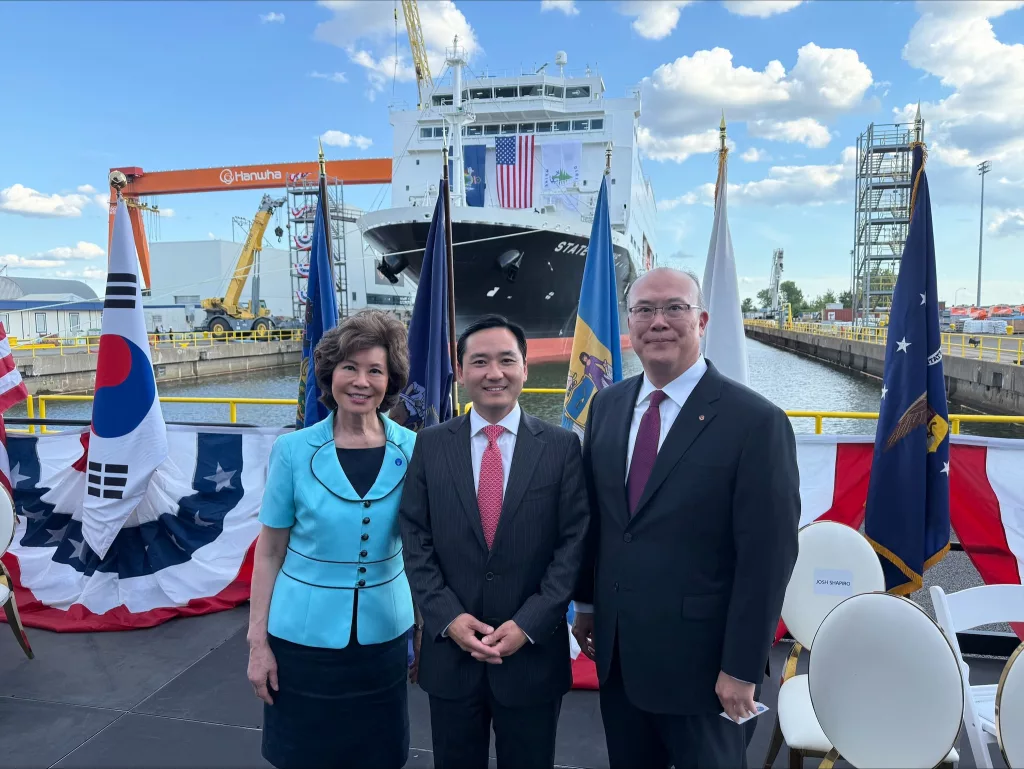
Hanwha Philly Shipyard, once among America’s largest and most productive shipyards during World War II, now reflects the decline of U.S. shipbuilding, which accounts for just 0.04% of the global market as of 2024. Since acquiring the shipyard for $100 million last year, Hanwha has announced a $5 billion expansion plan. This includes building two additional docks, three more piers, and new block assembly facilities, aiming to boost annual capacity from 1.5 ships to as many as 20. Hanwha also plans to build LNG carriers, naval modules and blocks, and eventually U.S. naval ships at the yard.
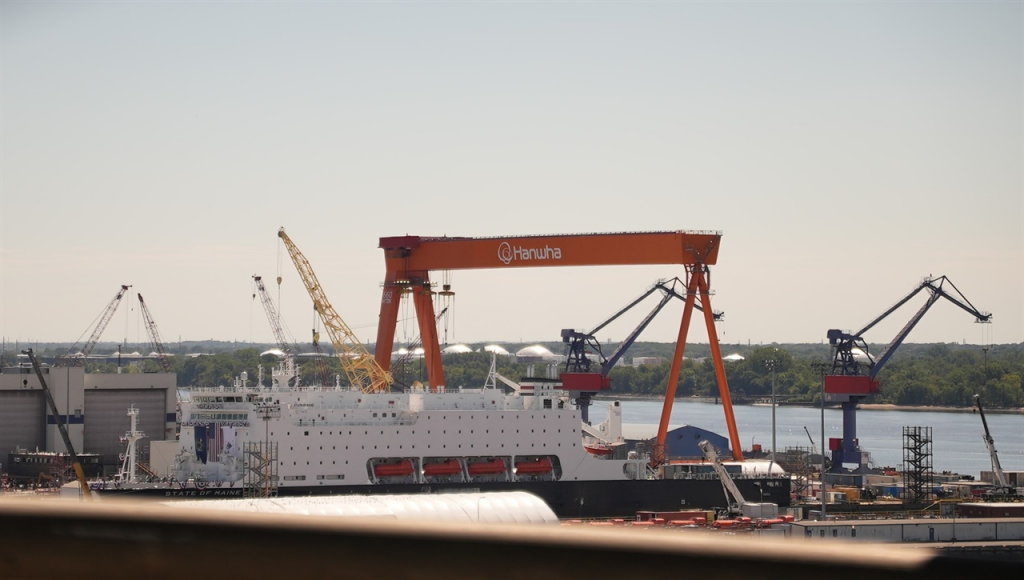
The State of Maine, christened during Lee’s visit, is the first vessel completed at Philly Shipyard since Hanwha’s acquisition and the third of five NSMVs ordered by MARAD. It will serve as a training ship for cadets in peacetime and a disaster relief vessel in emergencies. Korea’s DSEC contributed to its design and procurement, marking a success story of bilateral cooperation.
Symbolism and Challenges of Cooperation
At the ceremony, Hanwha Vice Chairman Kim Dong-kwan emphasized: “The christening of the State of Maine demonstrates tangible results of Korea-U.S. investment to rebuild shipbuilding, expand capacity, and train future talent. Hanwha will work with U.S. partners to create new opportunities and play a central role in making American shipbuilding great again.”
Philly Shipyard Director Lee Jong-moo said Hanwha would apply cutting-edge technologies—including smart yard systems, automation, robotics, and digital twins—to transform it into the world’s safest and most efficient shipyard. He noted that joint construction and design of U.S. naval vessels could further strengthen the security alliance.
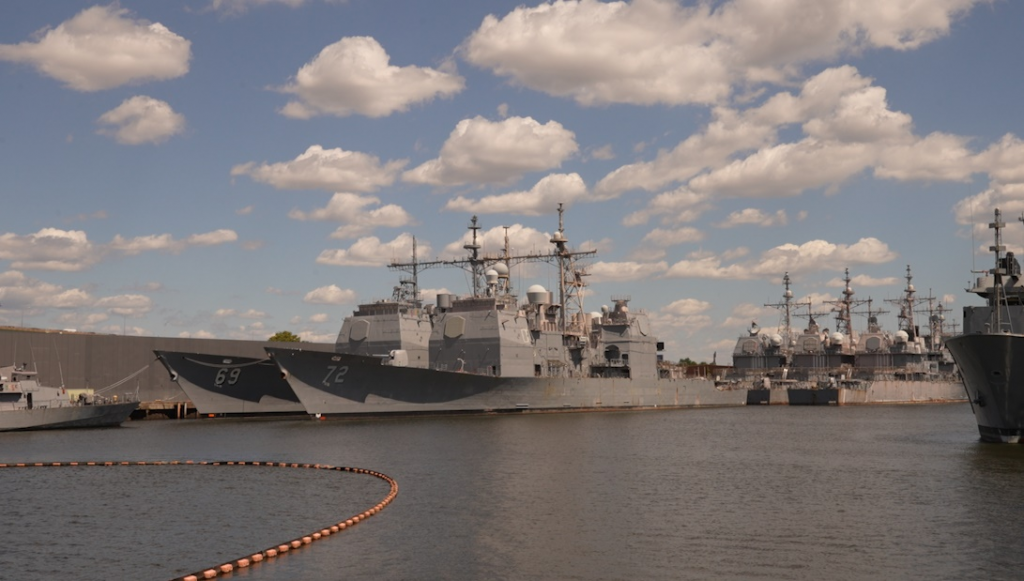
Hanwha Shipping also placed an order for 10 medium-range product/chemical tankers at Philly Shipyard, with the first delivery expected in early 2029. It exercised an option for a second LNG carrier, following its landmark U.S. order last month the first such export ready LNG vessel in nearly 50 years. These moves highlight Hanwha’s role in diversifying U.S. shipbuilding and boosting global competitiveness.
Korean Americans in Philadelphia gathered outside the shipyard waving Taegukgi flags to welcome President Lee, underscoring the symbolic significance of the visit.
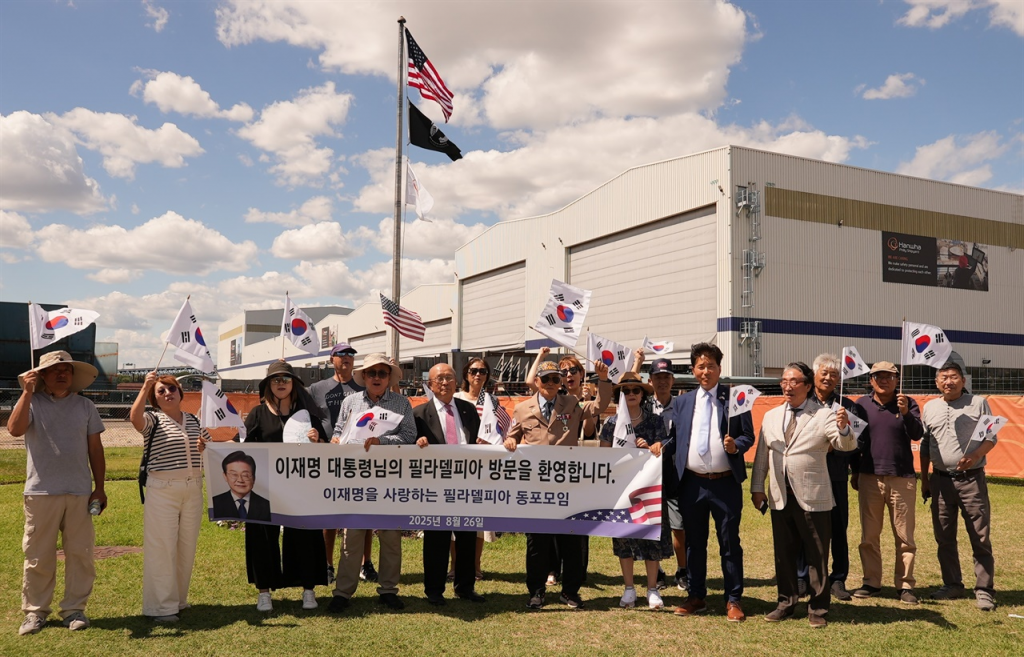
While experts point to challenges aging U.S. facilities, a shortage of skilled workers, and the difficulty of attracting new labor Hanwha plans to address these with modernization, worker training, and advanced manufacturing integration. The $5 billion investment is linked to the broader Korea-U.S. partnership agreements on shipbuilding, nuclear energy, and aerospace.
Whether the “MASGA” vision will indeed revive American shipbuilding remains to be seen, but President Lee’s visit to Philadelphia has set the stage for a new chapter in the alliance.

